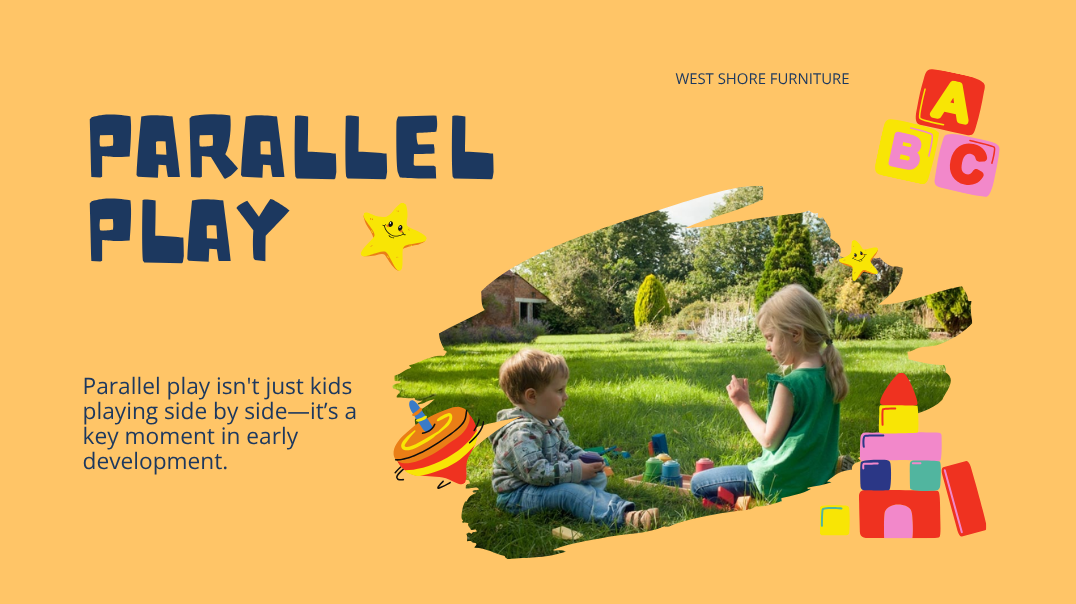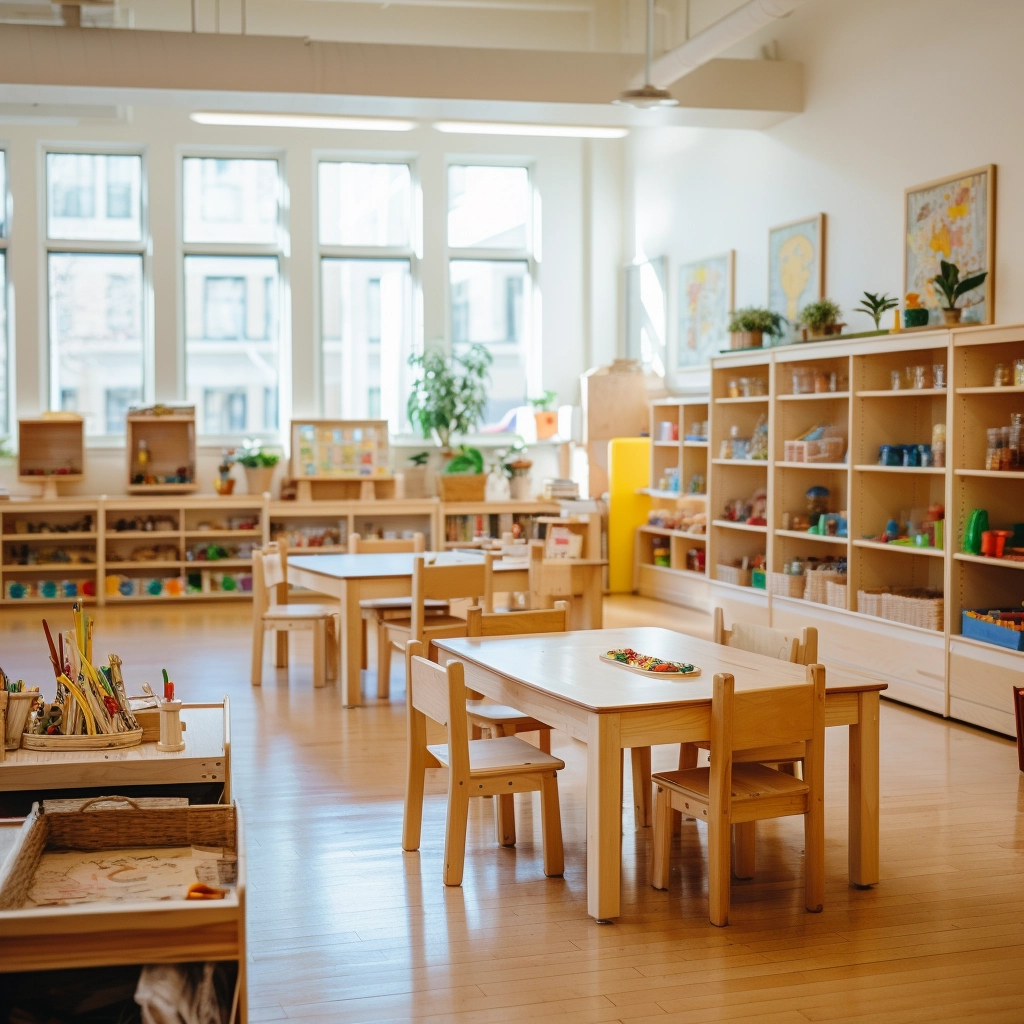Is your toddler happily stacking blocks next to other children but not actually joining in? Do they sit side by side, each absorbed in their own activity, while barely interacting? Many parents and teachers wonder whether this behavior is normal or a sign of concern. The answer lies in understanding parallel play.
Parallel play is a natural stage of early childhood development and not a red flag. In fact, it plays a crucial role in building the foundation for future social skills. When young children play alongside one another, they are quietly practicing how to observe, imitate, share space, and prepare for cooperative play. What may look like “playing alone” is actually an important step toward learning empathy, communication, and teamwork.
For parents, teachers, and kindergarten founders, recognizing the value of parallel play can transform how you support early social growth. In this article, we’ll explore what parallel play means, why it matters in early childhood, and how you can nurture it to help children thrive both socially and emotionally.
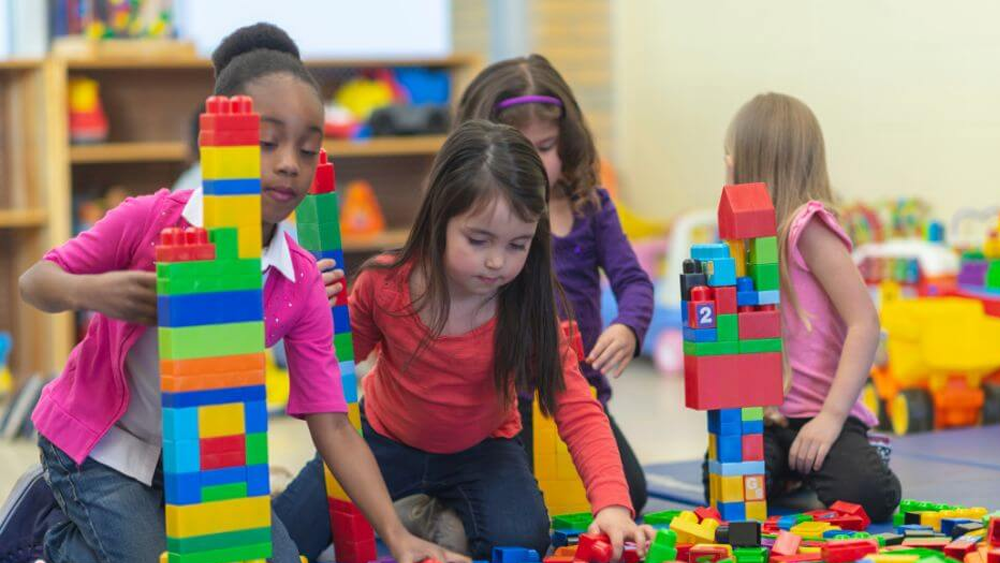
What is Parallel Play?
Parallel play is a foundational stage in early childhood development, where children play side by side but don’t directly interact with each other. This isn’t random behavior; it’s a structured developmental phase where toddlers begin to observe, learn, and adapt social behaviors by simply being near other kids.
While it may look like they’re playing alone, they’re engaging in side-by-side play, often imitating each other’s movements, sounds, or play styles. You might see two children sitting close together, each stacking their own set of blocks or playing with similar toys, but without sharing or talking much. This, in essence, is parallel play.
Many professionals define parallel play as a stepping stone between solitary play and more complex social interactions. Parallel play in psychology is often used to explain how toddlers build comfort in group settings before forming active relationships.
Here’s the key point: during parallel play, direct interaction isn’t the focus—observation is. Children watch how others use toys, listen to the sounds they make, and often copy their actions. Through this quiet side-by-side learning, they are gradually building the social awareness and confidence needed for future group play.
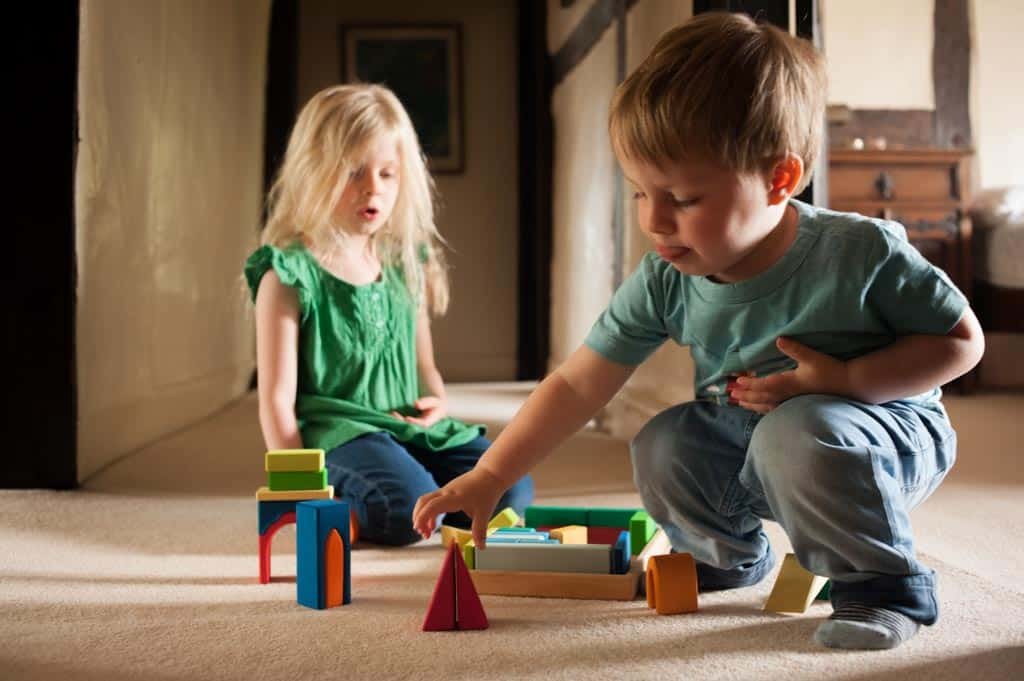
Parallel Play Examples
Understanding the meaning of parallel play is easier when we look at real-life scenarios. This form of play appears simple, but it supports deep social learning. Children don’t have to speak or directly interact to be part of the group; they only need to be present, playing side by side.
Here are some clear examples of parallel play in everyday settings:
- Children sit on the floor with their own set of building blocks, each constructing a tower without speaking. They occasionally glance at one another or copy each other’s moves, but they remain focused on their work.
- Toddlers at an art table, each coloring a separate piece of paper. There is no sharing or conversation, but they might imitate the colors or motions they see the other child using.
- In a sandbox, kids dig their holes or build individual sandcastles. Each child works independently, yet their play styles slowly start to influence one another just by being nearby.
- On a playground, two children swing on adjacent swings. They are not talking or making eye contact, but they are engaged in the same activity at the same pace.
พร้อมที่จะออกแบบพื้นที่ที่สร้างแรงบันดาลใจในการเรียนรู้หรือยัง ติดต่อเราเพื่อสร้างโซลูชันเฟอร์นิเจอร์ที่ปรับแต่งให้เหมาะกับความต้องการในห้องเรียนของคุณ
Mildred Parten’s Social Behavior Theory and Stages of Play
Sociologist Mildred Parten first formalized the concept of parallel play in the 1930s. Her groundbreaking research on children’s social behavior led to the identification of six distinct stages of play, each representing a different level of social interaction and cognitive development in early childhood.
The stages are as follows:
Unoccupied Play
This is the earliest form of play, usually observed in infants. Children appear to be doing nothing in particular. They may move randomly or stare into space. While it seems passive, it’s a critical period where the child is absorbing their surroundings.
Solitary Play
In this stage, children play alone with little interest in what others are doing. This is most common in toddlers and helps them focus, problem-solve, and develop independence.
Onlooker Play
Here, children watch others play without joining in. They may ask questions or comment, but they do not participate. It’s a form of learning through observation and often serves as a transition into more active engagement.
Parallel Play
This is the fourth stage and perhaps the most transitional. Children play alongside each other, often with similar toys or materials, but without direct interaction. They are aware of each other and may mimic behaviors, but there is no shared goal. Parallel play is common between 18 months and three years of age, though it can occur earlier or later, depending on the child.
Associative Play
At this stage, children start to interact more while still focusing on individual activities. They might share materials, talk to each other, or show interest in what their peers are doing, but they don’t collaborate on a common outcome.
Cooperative Play
This is the most socially advanced stage. Children play together with shared goals, rules, and roles. Whether they are building something as a team or engaging in role-play, cooperative play reflects a higher level of communication and collaboration.
Parallel play plays a crucial role in bridging the gap between solitary behaviors and interactive group dynamics. According to Parten’s theory, children naturally progress through these stages at their own pace. No stage is skipped; instead, each serves as preparation for the next.
In early childhood education, especially in Montessori and Reggio Emilia-inspired environments, teachers observe and support each stage of play, recognizing that each type contributes to emotional, social, and cognitive development. Understanding where a child is in Parten’s framework helps educators and parents provide the right level of support and challenge.
Comparison of Parten’s Six Stages of Play
| Stage of Play | Age Range (Approx.) | คำอธิบาย |
|---|---|---|
| Unoccupied Play | 0–6 months | Child plays alone, focused on their activity with little awareness of others. |
| Solitary Play | 6–18 months | The child watches others play but does not join in. May ask questions or comment. |
| Onlooker Play | 18–24 months | A child plays alone, focused on their activity with little awareness of others. |
| Parallel Play | 18 months–3 years | Children play side by side with similar toys, no direct interaction, but mutual awareness. |
| Associative Play | 3–4 years | Children begin to interact, share materials, and talk, but have no shared goals. |
| Cooperative Play | 4+ years | Children play together with a shared purpose or game rules; collaboration and teamwork. |
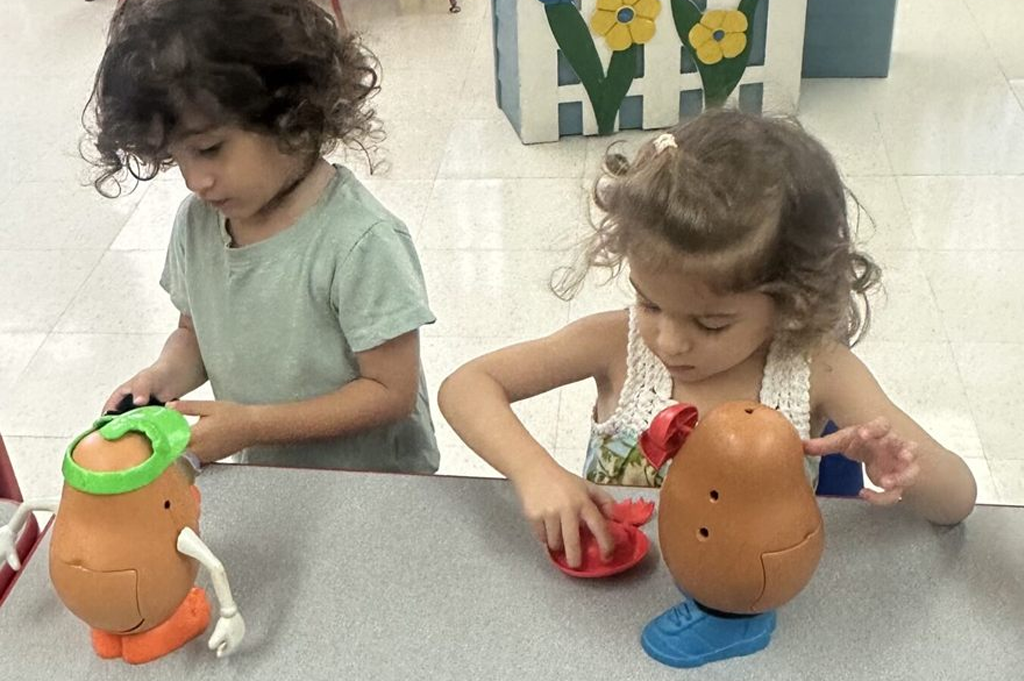
When Does Parallel Play Start and End?
When Does Parallel Play Begin?
Parallel play often starts to appear around 18 months of age, becoming especially prominent between ages 2 and 3. At this stage, children are more mobile, more curious, and increasingly aware of others around them. However, they may still lack the verbal and social skills required for group interaction. Instead of engaging directly, they prefer to play near other children, observing, imitating, and learning through proximity. This is a normal and essential part of early social development.
When Does Parallel Play End?
There is no exact age when parallel play must end. For most children, it naturally fades between 3 and 4 years old as they develop the ability to share, take turns, and communicate more effectively. The key is observing progress. Suppose a child is still only showing parallel play well beyond this age and is not demonstrating interest in others or attempting interaction. In that case, it may be worth discussing with an early childhood specialist.
However, in many cases, continued parallel play is simply part of a child’s temperament or comfort zone. Children with more introverted personalities or those adjusting to new environments may rely on parallel play as a stepping stone to deeper interaction.
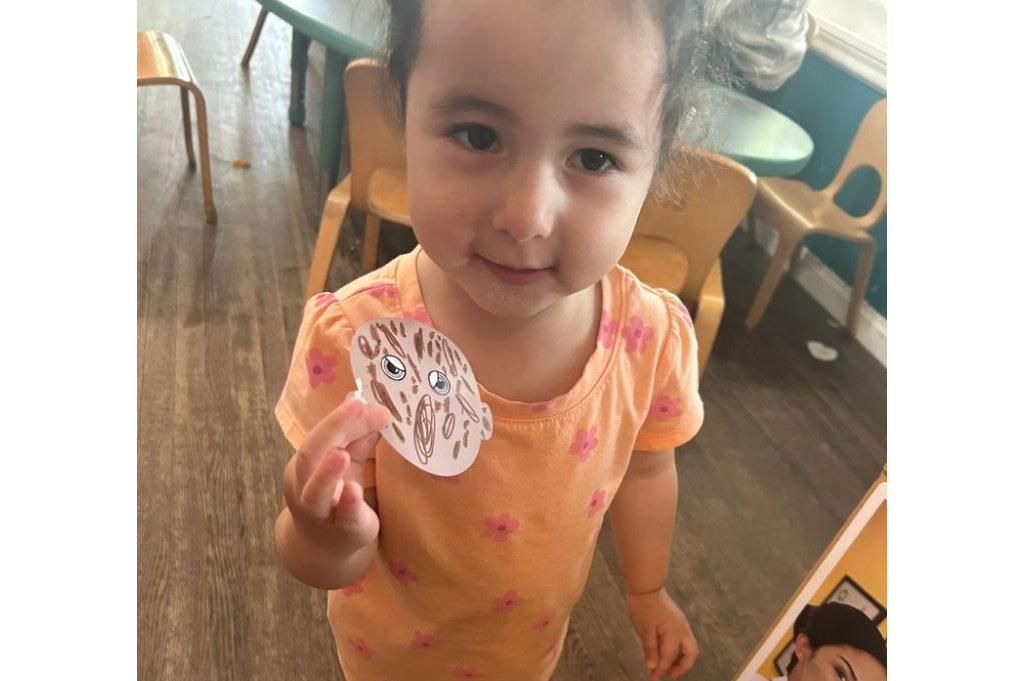
Benefits of Parallel Play
Parallel play may appear simple on the surface, just children playing side by side without direct interaction, but its developmental value is deep and far-reaching. This stage supports a wide range of early childhood milestones across the cognitive, social, emotional, and physical domains. For both families and educators, understanding its advantages can help in designing more effective learning environments and socialization strategies.
Develops Emotional Regulation
Being near others, especially in stimulating environments like classrooms or playdates, can be emotionally overwhelming for toddlers. Parallel play offers the perfect balance: children are not isolated, but they aren’t forced to interact either. This helps them manage their feelings, observe emotional cues in others, and develop self-soothing strategies in real time.
Encourages Imitation and Learning Through Observation
One of the most powerful learning tools in early childhood is imitation. In parallel play settings, children naturally copy what their peers are doing, such as stacking blocks, coloring a circle, or pushing a toy car. This helps expand their play skills, increases confidence, and often leads to more advanced behaviors. Over time, this observation-based learning leads to greater creativity and social flexibility.
Supports Language Development
While children may not talk directly to each other during parallel play, language is still being absorbed. Hearing others speak, sing, or narrate plays helps build vocabulary and sentence structure. Children might repeat phrases they hear from a nearby peer, laying the groundwork for eventual verbal exchange.
Enhances Motor Skills
Many parallel play activities involve fine and gross motor development, such as scooping sand, stacking objects, painting, or moving toys. When children do these side by side, they often pick up new movements by watching each other. Over time, this shared physical engagement supports stronger coordination and muscle control.
Reduces Social Anxiety
For children who are shy, highly sensitive, or new to a group setting, parallel play provides a safe entry point into social spaces. It gives them the opportunity to get used to others without pressure to speak or share. Over time, this repeated exposure increases their comfort level and makes future interactions less intimidating.
How to Help Children with Parallel Play
Create the Right Environment
Supporting parallel play starts with designing a space that promotes comfort, independence, and shared presence. Whether at home or in a classroom, the environment should allow children to explore freely while still being physically near their peers. Furniture layout plays a vital role here—low shelves, individual floor mats, and small tables positioned side by side allow children to engage in activities without being crowded or distracted. Avoid tightly packed areas or chaotic setups, which can increase tension or overstimulation. When children have access to calm, well-structured spaces, playing side by side becomes natural, and social learning begins to happen quietly in the background.
Provide Duplicate and Accessible Materials
Conflict over materials can interrupt or prevent parallel play, especially among toddlers who are just learning to manage emotions and self-regulation. That’s why offering duplicate toys is critical. If you’re setting up an activity with puzzles, blocks, or toy food sets, ensure there are enough for each child to have their own set. This avoids competition and allows them to stay focused on their exploration. Additionally, storing materials in central, reachable locations gives children the freedom to choose and return items without constant adult intervention. This setup not only supports autonomy but also enhances social awareness as children observe their peers engaging in similar tasks nearby.
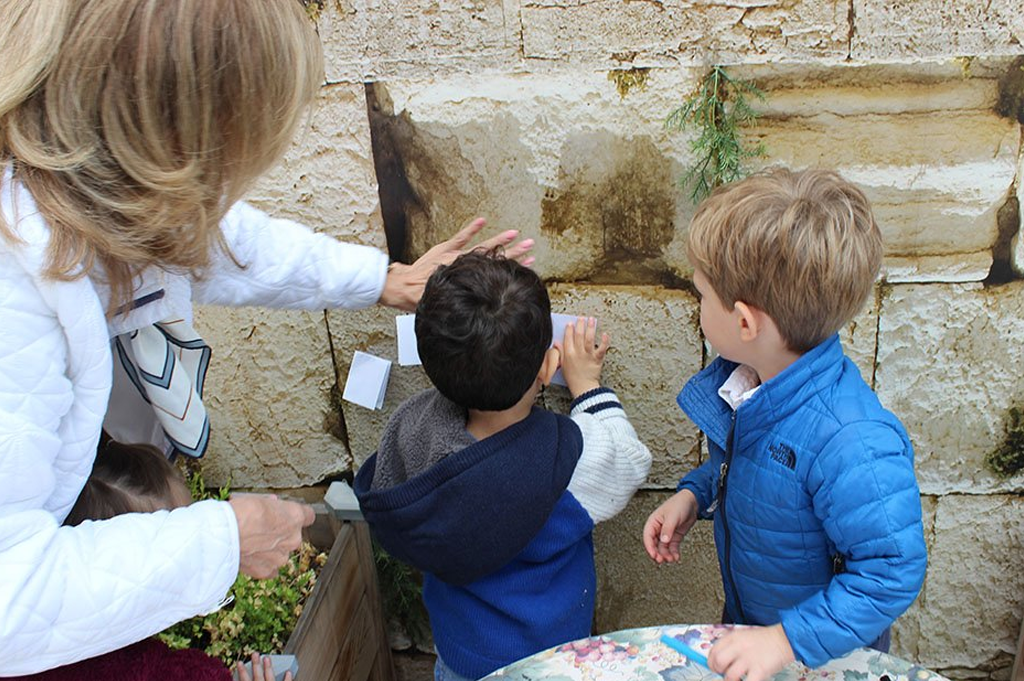
Introduce Themed Play Zones
Organizing space into themed play areas creates structure and variety without forcing interaction. For example, a classroom might include a block station, a dramatic play corner, an art shelf, and a sensory table, each designed to invite exploration. These zones can function as parallel play hubs, where children engage independently but observe others using similar tools or materials. Themed areas also encourage imitation: a child stirring pretend soup in one kitchen station might inspire another nearby to do the same. Over time, this kind of silent social modeling becomes a powerful bridge toward deeper peer interaction. The more consistent and inviting the zones are, the more children will return to them confidently.
Offer Open-Ended, Sensory-Rich Activities
Open-ended materials are key to parallel play because they don’t have a “right” way to be used. Items like playdough, kinetic sand, finger paints, and scoop-and-pour rice bins allow for personal expression and creativity, which are critical at this developmental stage. Sensory play also supports emotional regulation and fine motor skill growth, offering children calm and focused experiences. Since these materials invite repetition and attention, they’re perfect for prolonged engagement next to others. One child may roll dough into shapes while another presses in cookie cutters, each doing their own thing, yet learning from and attuning to each other.
Set Up Playdates for Practice
Intentional, low-pressure playdates are a great way to extend parallel play into new environments. Choose peers close in age and temperament, and keep the group small, ideally two to three children. Set up the space with duplicate toys and allow the children to interact without prompting or correction. Keep sessions short at first, about 20 to 30 minutes, and let the rhythm develop naturally. Over time, with repeated exposure, children will begin to move from parallel activities to moments of associative play, where they show interest in what others are doing and may begin to comment or share.
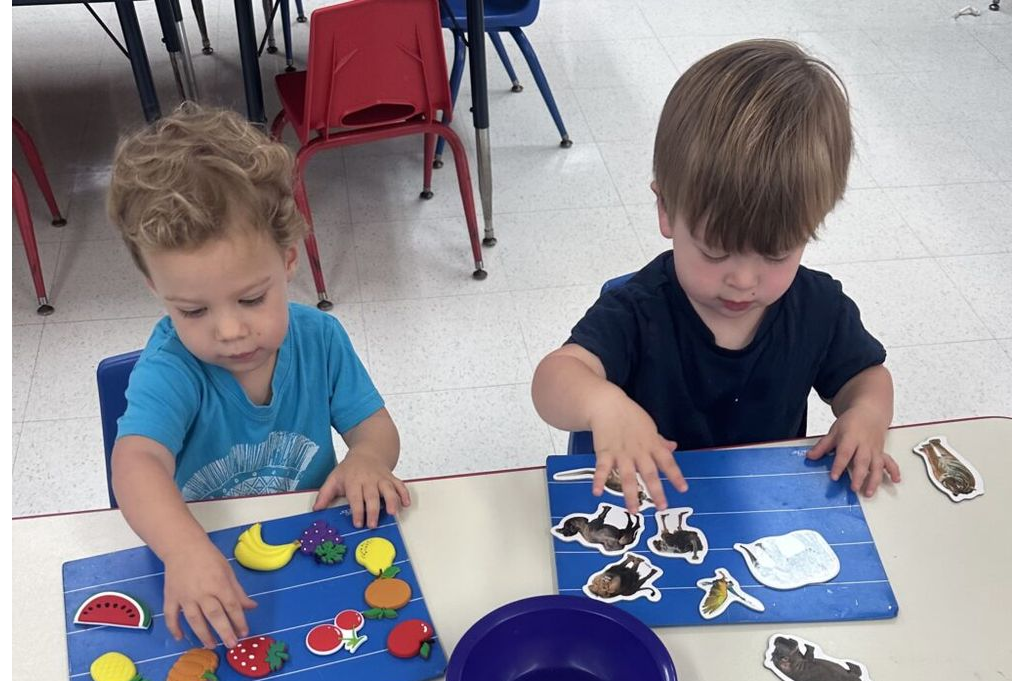
Use Music and Movement
Parallel play isn’t limited to quiet table activities. Music, movement, and rhythm-based games can also promote shared presence and imitation. Simple dance parties with kid-friendly songs, drumming with hands or instruments, and freeze-dance games all provide physical ways for children to engage side by side. These activities support body awareness, encourage rhythm, and build comfort in group settings, all without the pressure to talk or take turns. Children with different learning styles, including those with sensory sensitivities, often respond well to these activities because they combine structure with freedom.
Be a Positive Role Model
Children learn through watching adults. One of the most effective ways to encourage parallel play is by modeling it yourself. Sit near the child and quietly engage in a similar activity, such as stacking blocks, painting, or scooping sand, without interrupting their process. This shows that shared space doesn’t have to mean forced interaction. It also builds trust. When adults mirror children’s play or show interest in what they’re doing, it often leads to the child glancing over, smiling, or starting to imitate the adult. These are the first steps toward meaningful social exchange.
Scaffold Social Interaction Gently
Though parallel play is independent, adults can still support gradual social growth through gentle scaffolding. This means offering just the right level of support at the right time, like placing one shared tray of materials between two children and allowing them to use it side by side. If they begin reaching into the same space or noticing what the other is building, it opens the door to future cooperation. Avoid stepping in too quickly with prompts like “Share that” or “Talk to her.” Instead, let the children take the lead, observing how they begin to synchronize and engage over time.
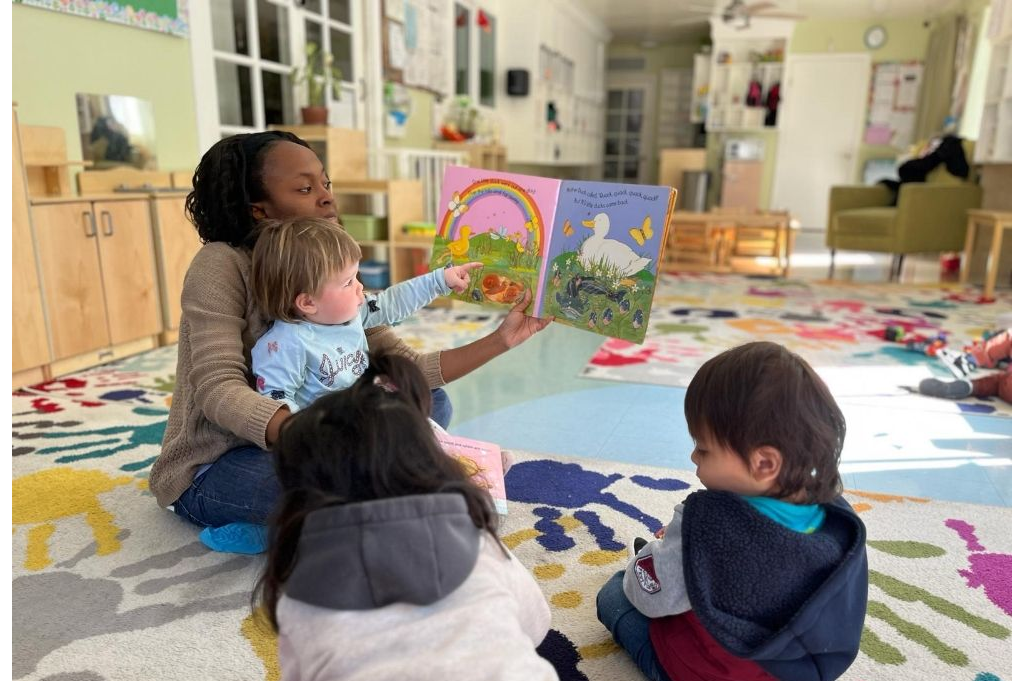
Encourage and Praise Social Behaviors
Children benefit greatly from simple, specific praise when they show early signs of engagement. For example, if a child chooses to sit closer to a peer or begins to mirror their painting technique, acknowledge it with a calm, affirming comment: “I noticed you’re painting like Ethan, that’s a great idea.” Reinforcement like this encourages confidence and motivates continued social risk-taking. The key is to praise the action, not the outcome, so that children feel safe trying again, even if the interaction doesn’t go as expected.
Track Progress and Personalize Support
Ongoing observation is essential in guiding each child’s development through the stages of play. Educators and parents should note how often and for how long a child engages in parallel play, and watch for subtle signs of change, like increased proximity to others, spontaneous imitation, or verbal remarks during play. Keeping informal records helps identify patterns, strengths, and areas needing support. If a child is consistently avoiding peers or showing frustration in group settings, this insight allows adults to adjust the environment or introduce new strategies. Over time, personalized support leads to smoother transitions into more complex forms of interaction.
Toys And Furniture That Support Parallel Play
The right toys and activities are essential for encouraging meaningful parallel play. These tools don’t just keep children occupied; they invite curiosity, allow for independent exploration, and support social development through observation and imitation. In well-prepared preschool environments, carefully selected materials help children engage side by side while building the foundation for future cooperative skills.
Open-Ended Toys
Open-ended toys allow for multiple uses and interpretations, making them ideal for parallel play. They give children the freedom to explore at their own pace, without rules or expectations. Some of the most effective examples include:
- Wooden building blocks
- Interlocking bricks (like DUPLO or Mega Bloks)
- Nesting cups and stacking toys
- Loose parts (shells, buttons, pebbles, etc.)
- Foam shapes or soft construction sets
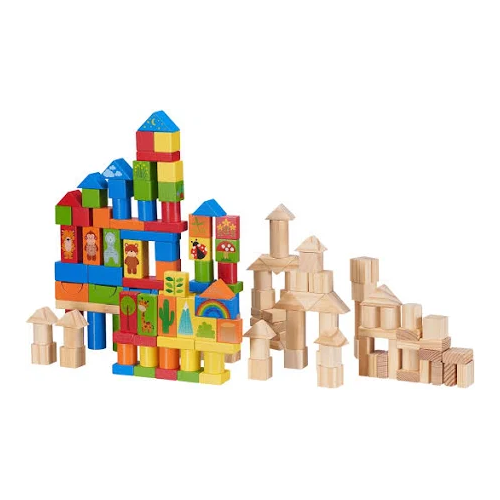
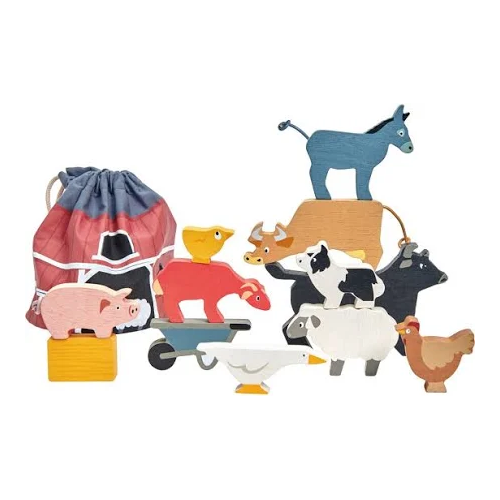
These toys allow each child to engage in their activity while often mimicking what others nearby are doing. This creates a subtle social connection without direct interaction.
Sensory Play Materials
Sensory activities naturally encourage parallel play because they are engaging, calming, and personal. Children enjoy using their hands, tools, or fingers in these textures, often while quietly watching how others do the same.
Effective sensory materials include:
- Playdough or modeling clay
- Water or sand tables
- Finger paints and sponge brushes
- Rice bins with scoops and containers
- Slime, putty, or kinetic sand
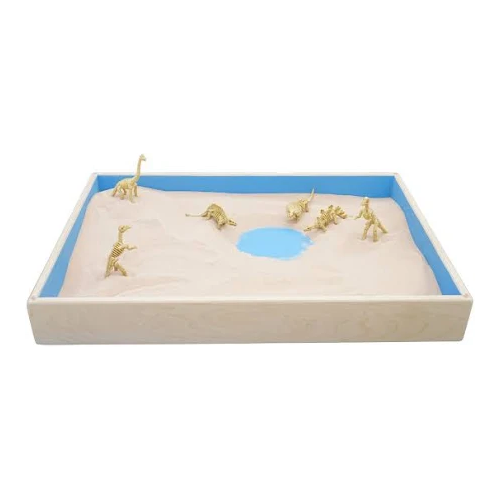

These activities support both motor skill development and quiet, side-by-side engagement.
ชุดเล่นแกล้งทำ
Pretend play sets encourage imagination and individual storytelling, which makes them perfect for children who are not yet ready to cooperate directly. Children can engage in parallel play while pretending to cook, care for dolls, or shop at a pretend store.
Top choices include:
- Toy kitchen sets
- Doctor kits
- Toy cleaning sets
- Dollhouses with accessories
- Grocery or market play stations
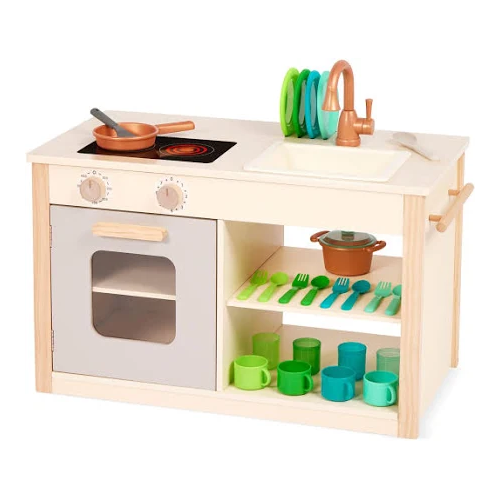
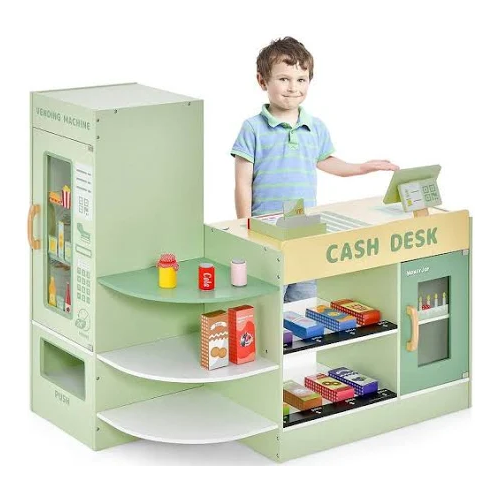
These setups allow each child to engage in their role-play, all while watching others and picking up new actions or ideas through observation.
Art and Creative Materials
Creative materials give children a sense of autonomy and also provide excellent opportunities for side-by-side engagement. When multiple children work on their art, they often begin to notice and mirror each other’s choices, leading to early signs of connected play.
Effective options include:
- Crayons, markers, and colored pencils
- Watercolor trays and brushes
- Glue sticks, stickers, and paper scraps
- Easels and whiteboards
- Stamps and stamp pads
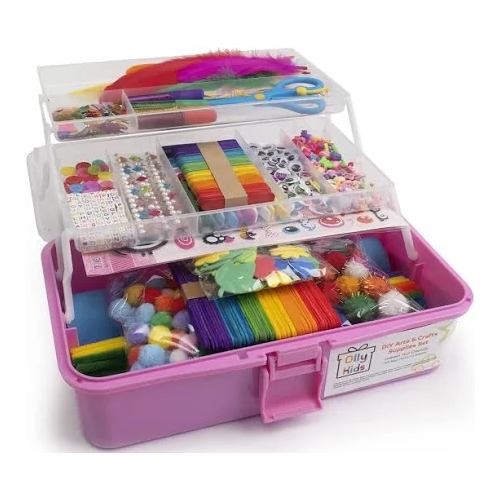
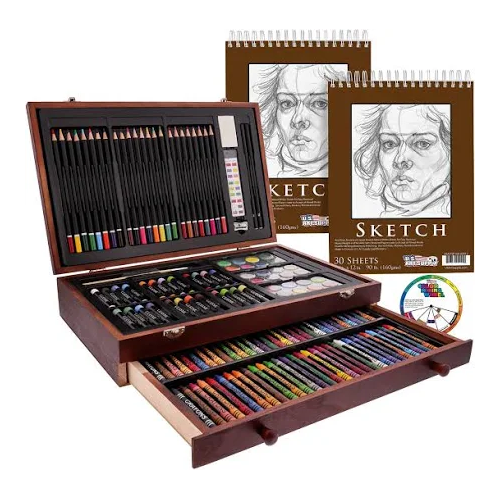
Setting up an art table with individual supplies is a simple yet powerful way to support parallel play.
Movement and Music Activities
Parallel play isn’t limited to toys—it can happen during movement, too. Music and gross motor activities help children feel connected without requiring verbal communication.
Some ideas to support parallel engagement through movement:
- Side-by-side dancing during music time
- Jumping or hopping on individual floor spots
- Yoga mats for parallel stretches or poses
- Rolling soft balls independently in a shared space
- Mimicking clapping or rhythm games while seated near others
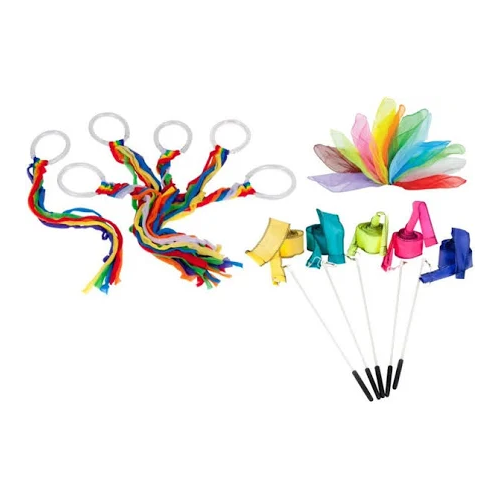
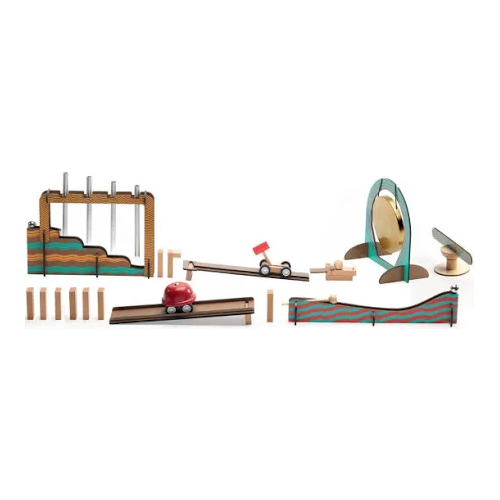
These activities offer physical expression and emotional regulation while strengthening the awareness of peers nearby.
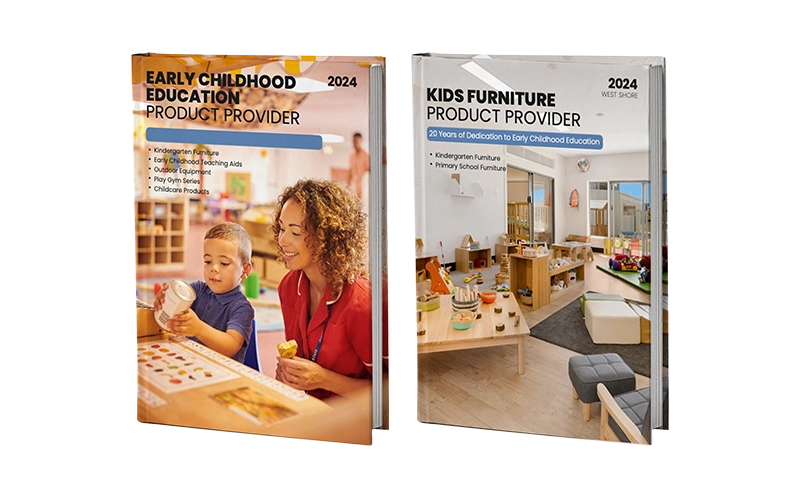
What is Parallel Play Autism?
Parallel play is a typical stage of development for all children, but in children with autism, it can serve a different and often deeper role. While most children move from solitary play into parallel play between 18 months and 3 years, then gradually into more interactive forms like associative or cooperative play, children on the autism spectrum may remain in the parallel stage longer.
This extended engagement with parallel play is not necessarily a cause for concern. Instead, it reflects how autistic children process social stimuli, often preferring routines, structure, and reduced social pressure. Playing side by side with peers, without the need for eye contact, conversation, or physical interaction, allows them to participate socially in a way that feels safe and manageable.
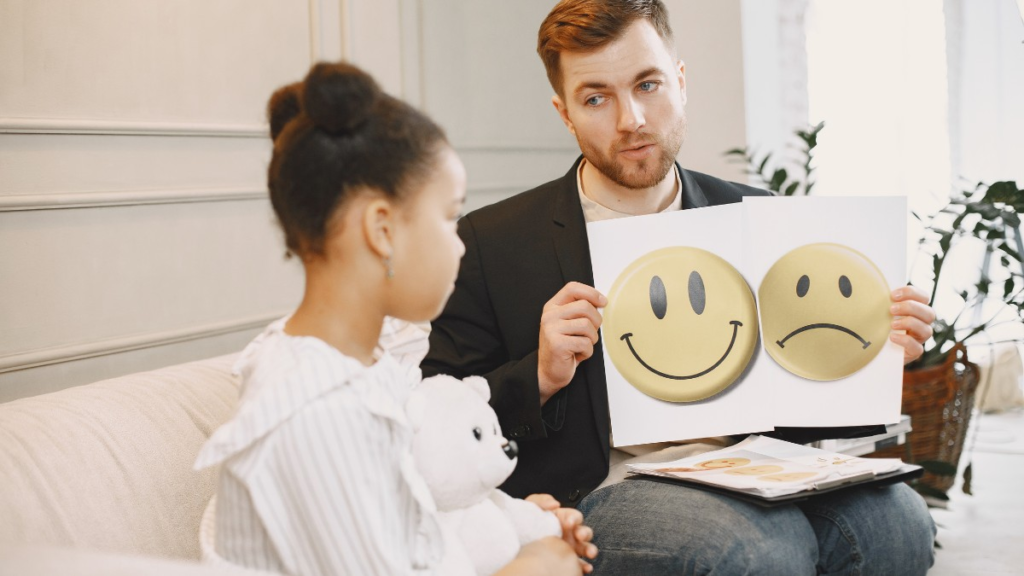
For a child with autism, parallel play may involve lining up toy cars, stacking blocks repetitively, or drawing in silence while seated near other children. There may be little to no direct interaction, but these children are often aware of their peers and may gradually begin to show signs of social engagement, like imitation, shared attention, or minor behavioral adjustments. These subtle shifts are essential indicators of growth and adaptation, especially in autism-friendly environments that honor sensory needs and reduce external pressure.
Supporting parallel play in children with autism means embracing it as a valid form of social learning rather than trying to rush children into interaction. Educators and caregivers can help by creating predictable routines, offering individual workspaces close to peers, and using visual supports to clarify expectations. It’s also helpful to model simple actions nearby and gently acknowledge non-verbal signs of connection, such as using similar toys or looking in another child’s direction. By respecting the pace of each child and viewing parallel play as a bridge rather than a barrier, we create inclusive spaces where all children can develop social confidence in their own time.
บทสรุป
Parallel play is far more than just children playing quietly beside one another; it is a developmental stage that lays the groundwork for lifelong social competence. From the first moments a toddler imitates another child’s stacking of blocks to the silent exchange of ideas across a shared art table, parallel play provides a safe, natural, and powerful space for children to observe, adapt, and grow socially. It bridges the gap between solitary exploration and active cooperation, helping children develop empathy, awareness, and early communication skills, often without a single word being spoken.
For educators and early childhood centers, creating environments that nurture this kind of learning is essential. This includes not only offering the right activities and materials but also choosing furniture and space layouts that support children working independently, yet together. Thoughtfully designed learning areas—spacious, safe, and divided into child-friendly zones—allow children to engage in side-by-side play with ease, confidence, and comfort. That’s where manufacturers like เวสท์ชอร์เฟอร์นิเจอร์ quietly play a role in supporting child development behind the scenes. By providing functional, well-crafted early childhood furniture tailored for preschool and Montessori environments, they help schools create the kinds of flexible, child-centered spaces where parallel play naturally thrives.
In the end, understanding what parallel play means and recognizing its role in a child’s broader social journey can change the way we see those quiet, focused moments. They are not signs of isolation. They are the beginnings of a connection.
Frequently Asked Questions About Parallel Play
Is parallel play considered a social activity?
Yes, parallel play is a foundational form of social activity. While children don’t directly interact, they observe, imitate, and become socially aware through side-by-side play.
Does parallel play happen only in toddlers?
No. While common between 18 months and 3 years, parallel play can appear in older children or even adults, especially in new or uncertain social settings.
How can I encourage my child to move beyond parallel play?
Provide opportunities for small group activities, model simple social behaviors, and gently introduce shared tasks. Avoid forcing interaction, as progress should happen naturally.
Are there toys that support parallel play?
Yes. Open-ended toys like blocks, playdough, and pretend kitchen sets are ideal for parallel play. They allow independent exploration while encouraging imitation and observation.
What if my child becomes distressed during parallel play?
This can happen if the environment is overstimulating or unfamiliar. Provide a calm space, simplify the activity, and allow your child to re-engage when ready.
How can parallel play help in the development of motor skills?
Activities like stacking blocks, drawing, and scooping in sensory bins during parallel play enhance both fine and gross motor skills through hands-on, repetitive practice.
How does parallel play contribute to emotional regulation in toddlers?
Parallel play helps toddlers manage emotions by giving them space to explore and interact without direct social pressure, building confidence and self-soothing skills.
Can parallel play help with social anxiety in children?
Yes. For socially anxious children, parallel play provides a low-pressure way to be near peers, gradually reducing fear of interaction through quiet observation and comfort.
How can parents encourage parallel play at home for their children?
Set up play areas with multiple sets of the same toys, invite another child over for playdates, and allow them to play side by side without interrupting. Let the interaction evolve naturally.

